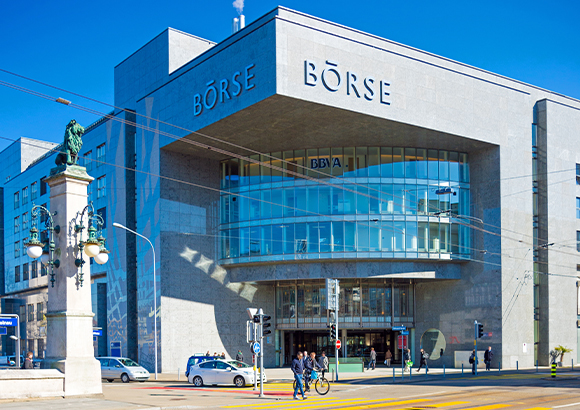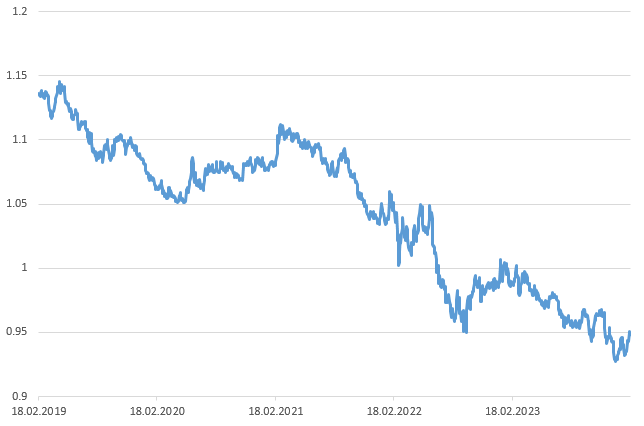Caught between strength and stagnation: a glance at the franc, interest rates and dividends
At a time when stock market indices all over the world are hitting new highs, the Swiss market is standing out for its remarkable restraint. The DAX, CAC 40, DJII and S&P500 have all been putting in impressive performances and setting new records, but the Swiss equity market is stuck some 10% below its all-time high at the end of 2021. This raises questions, especially as the Swiss franc has appreciated strongly against the dollar and the euro, and as major stocks like Roche and Nestlé show signs of weakness. In our interview with Chief Investment Officer Luca Carrozzo we investigate the reasons behind the poor performance of the Swiss market, discuss the role of the strong franc and consider whether the Swiss National Bank (SNB) needs to cut interest rates to get the equity markets going again. Find out why Swiss securities are out of favour at the moment and what this means for investors.

Apart from the FTSE-100 we have seen new records recently for indices all over the world; the DAX, CAC 40, DJII, S&P500, etc. Everywhere except in Switzerland, where the market is way off its peak.
In fact, the Swiss market is around 10% below its all-time high at the end of 2021. Until then Swiss stocks were able to keep up with the international competition. The reasons for the subsequent disappointing performance have first to do with the strong Swiss franc, which appreciated 8% against the dollar and 10% against the euro over the period 2022-2023, and second with the poor business performance at index heavyweights Roche and Nestlé.
So what do people have against Swiss stocks?
The strong franc meant that Swiss company results stagnated over the last two years, while earnings in other regions were climbing at double-digit rates. So there are good fundamental reasons why the Swiss equity market has underperformed.
Is the Swiss franc too strong? Is it frightening investors away?
Over the long term the franc appreciates about 2.5% per year against the dollar and the euro. The rise since 2022 has been almost double that. The consequence was stagnating company profits. The reason investors are steering clear of Swiss stocks at the moment is because of the heavy weighting in defensive sectors. Right now investors are focusing on cyclicals and the technology sector; big pharma and food manufacturers are out of favour.

But Swiss stocks have a lot going for them don’t they, including a solid dividend policy?
Swiss companies have been increasing their dividends steadily for years. The dividend yield on the Swiss equity market is currently 3%, which is highly attractive compared to the 0.8% on ten-year Confederation bonds.
Is the SNB’s monetary policy putting investors off?
Rather the opposite, actually. Thanks to the SNB’s monetary policy inflation in Switzerland is very low by international standards. The figure released in January showed a rise in consumer prices of 1.3%, well below the SNB target. This could mean the SNB will be the first major central bank to cut rates.
Will it take a rate cut to push the Swiss stock market up again?
A rate cut would definitely help, especially if the SNB were to lead the way. The prospect of rate cuts in Switzerland soon has already caused the franc to weaken slightly against the dollar and the euro since the start of the year. Falling interest rates and a slightly weaker franc will lead to Swiss stocks outperforming this year.
Have we seen the end of the record highs on equity markets? Hopes of a cut on Wall Street were disappointed last week when the inflation numbers were released.
In our view we have not yet seen the end of the record highs on equity markets. Investors are moving their expectations of the first rate cuts practically every time inflation or labour market data come out. But it remains a fact that monetary policy is far too tight given the weak performance of the economy. The “neutral” level of interest rates, the level at which economic growth is neither choked off nor stimulated, is supposed to be about 2% in the USA (where rates are now 5.5%), 1.5% in Europe (now 4%) and 1% in Switzerland (now 1.75%). The longer the central banks wait to make their first cuts, the sharper they’ll be.



